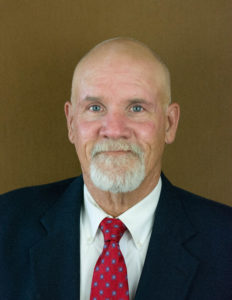
Dusty Roach
As long as I have been in the oil and gas industry, the largest obstacle to actual compliance, from what I can perceive, is buy-in. It is difficult, if not impossible, to bridge training, the application of policy, procedures, monitoring, and enforcement, especially if there is no buy-in. My reluctance to get into the field of safety, back in the Seventies, was that every safety person that I met was disingenuous, worried only about the numbers, and the bosses were focused pretty much on profitability. Most safety personnel did not respect the battles of operations in the field. Most operations personnel did not respect or know the battles of safety in the field.
I’ve heard innumerable executives and safety personnel indicate that safety was the highest priority. Yet the budgets, decisions, and actions (aka evidence) does not support that thought. In reality, profitability and growth seem to take the driver’s seat, and everything else is secondary or an afterthought. As I have stated before, just because you say it, it doesn’t make it so. “You can put boots in the oven, but it doesn’t make them biscuits.”
Conversely, I have never witnessed an executive or safety person publicly show disregard, when someone got hurt. Once again, no one wishes an injury on anyone. Injuries cost money. That is a fact. Safety helps keep the money that comes in the front door from going out the back door.
Fact.
So, where is the gap? What is the solution? Is there a solution? We have all heard the old saying that “anything made by man or machine will fail at some point.” Think about that statement. If it is totally true, then why try?
Winston Churchill said, “Success consists of going from failure to failure without loss of enthusiasm.” Wise words, true words.
The largest gap is exposed when one hears contradictory messages expressed in the same breath. Consider these: “I want to be the best and safest company,” followed by or (preceded by), “Success is measured by profitability.” Safety costs but accidents cost more! So, be up front with the message. Profitability is the main point of any business—another fact.
The second message should be an addendum to the first message. Make it clear that safety is an integral component to profitability. The personnel in the field usually have no idea of the direct and indirect cost that goes with accidents, nor the cost to maintain safety. The safety personnel understand the game, the rules, the pitfalls, and the marching orders. The messaging for the safety departments: 1. Make it happen, win at any cost but keep the costs down. 2. We aren’t going to be safety stupid. We have a business to run. 3. Safety personnel seldom spend the majority of their time in the field. The paperwork is intense and there are usually three supervisors to one safety person. Safety does not generate revenue.
Real safety is in the field. We need to inspect what we expect. If a worker in the field sees a safety person, and the employee says this is unsafe, this is how we can start to reduce risk.
What influence will a safety person be able to exert to bring about the needed change? More than likely, safety will give it the old, “I’ll see what I can do to affect the needed change.” Translated: I’ll try.
Everyone is aware that profitability and low cost are the King and Queen of success. Whether it’s intended or not, that’s the message heard in the field for both safety and operations.
The second gap is how much does a safety person really care about the battles of operations? Do the operations people in the field believe that safety genuinely cares about the ease of operations? Or do they come out and just point out the things that are wrong, then leave with no real world solution? Operations rely on lean operations. It does not matter if you’re tired, houred out, or behind. If you can’t do it, they’ll find someone that can! It doesn’t matter if you don’t have the proper tools, resources, or adequate help. The worker’s solution: take short cuts (timesavers), falsify productivity with documentation, or stop short but tell yourself you’ll come back to it later. The normal safety guy wouldn’t know this, because they’re not usually in the field. It’s the same battle—just different expectations relying on luck.
The first solution is to fix the message. Make it believable, empathic to the real world challenges that we face daily—operations and safety! You must communicate all issues without small talk. The second solution is to care genuinely and be a part of the solutions. Show concern and include everyone in the battles, from top-down, and bottom-up!
The last solution: open communication from the top down and bottom up. Have some frank conversations.
Fix the Message. Show you genuinely care. If it fails, repeat the process, until you are successful at safety and profitability. Give respect and be willing to earn respect. Be genuine. See you next month.
“It’s not about how many hits you make in baseball. What counts is how many times you reach home safely.” —Dust
___________________________________________________________________________________________________
Dusty Roach is a safety professional based in Midland. He is also a public speaker on subjects of leadership and safety, and he maintains a personal website at dustyroach.com.










